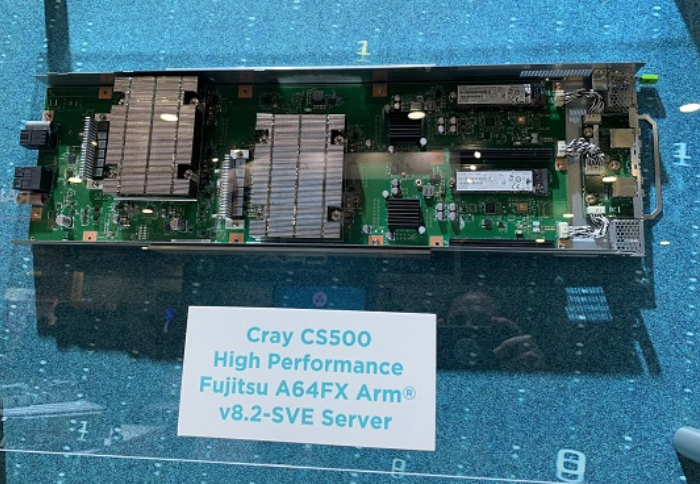LOS ALAMOS, N.M., Sept. 1, 2020— Los Alamos National Laboratory recently began using HPE Apollo 80 Systems from Hewlett Packard Enterprise (HPE) that feature Fujitsu A64FX Arm processors for evaluation of some of the most demanding physical simulation workloads in the world.
“Analysis of these new system is just one example of the Laboratory’s commitment to seeking the very best products and tools available for our mission,” said Steve Poole, senior scientist at Los Alamos. “Our drive towards more efficient HPC architectures and storage systems for mission applications is a distinguishing element of our HPC strategy and leadership.”
The A64FX processor is also used in “Fugaku”—the fastest supercomputer in the world—and has Scalable Vector Extensions (SVE) and high-bandwidth memory (HBM2) features that are useful for multi-physics/linkscale/resolutional simulations. Los Alamos will leverage the same processors in the new HPE Apollo 80 System, along with the HPE Cray Programming Environment for a fully integrated software suite to improve productivity, application scalability, and performance.
The performance evaluation, sponsored by the Department of Energy National Nuclear Security Administration’s Advanced Simulation and Computing program, will test Lab applications using SVE and HBM2 to achieve a higher percentage of peak performance, which is the goal of Los Alamos’ Efficient Mission Centric Computing Consortium (EMC3). Los Alamos has been working for several years towards more efficient systems to decrease runtime of its demanding complex multi-physics applications, which have a petabyte of working set and run over half a year on the current largest DOE NNSA supercomputers. The announcement in November 2019 from HPE that Los Alamos was the first site to try the A64FX has launched what is now a successful foundation. The evaluation step is the next of many subsequent activities that will ultimately result in immense simulations that produce results on human time scales, days instead of months.
In parallel, the Laboratory will utilize the system to hone the necessary software environment to ensure stable production for Arm SVE HBM-based systems.
“By offering systems that support diverse architectures, we are enabling our customers with choice and flexibility to power any complex workload and increase outcomes,” said Bill Mannel, vice president and general manager, HPC, at HPE. “By equipping Los Alamos National Laboratory with the HPE Apollo 80 Systems, Los Alamos and its team of visionaries will gain a completely new architecture to support the development of new, emerging HPC and AI applications, and continue paving the way for innovation.”
About Los Alamos National Laboratory Los Alamos National Laboratory, a multidisciplinary research institution engaged in strategic science on behalf of national security, is managed by Los Alamos National Security, LLC, a team composed of Bechtel National, the University of California, BWXT Government Group, and URS, an AECOM company, for the Department of Energy’s National Nuclear Security Administration.
Los Alamos enhances national security by ensuring the safety and reliability of the U.S. nuclear stockpile, developing technologies to reduce threats from weapons of mass destruction, and solving problems related to energy, environment, infrastructure, health, and global security concerns.
About Hewlett Packard EnterpriseHewlett Packard Enterprise is the global edge-to-cloud platform-as-a-service company that helps organizations accelerate outcomes by unlocking value from all of their data, everywhere. Built on decades of reimagining the future and innovating to advance the way we live and work, HPE delivers unique, open and intelligent technology solutions, with a consistent experience across all clouds and edges, to help customers develop new business models, engage in new ways, and increase operational performance. For more information, visit: www.hpe.com.
‘LA-UR-20-26763’
